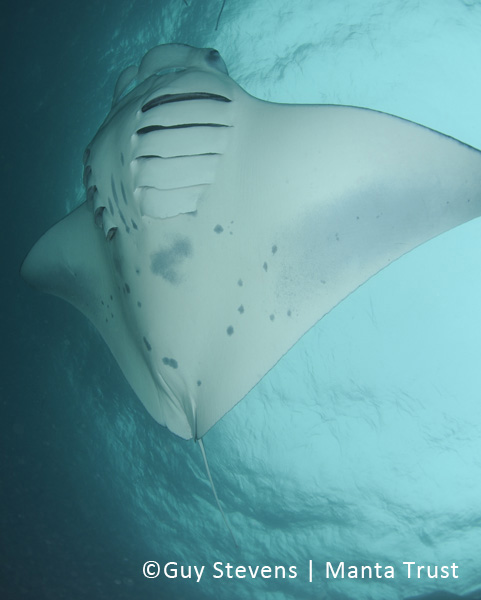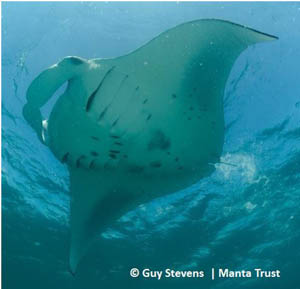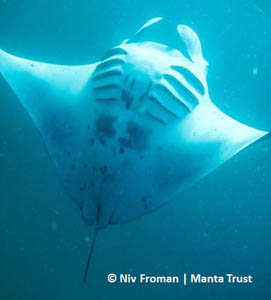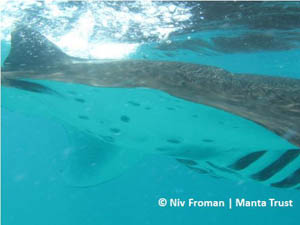Manta Rays’ reproduction is back in the Maldives!
For the past four years we have observed an alarming lack reproductive activity; very little courtship behaviour and no pregnant mantas have been recorded since Nov 2009. The slow growing rate of these creatures coupled with the production of few offspring (collectively referred to as “K-selection strategy”) make manta rays a very fragile species; unsustainable fishery as well as stressful ecological conditions may therefore heavily affect manta populations in a short period of time.
In the Maldives, manta rays seem to engage in courtship and reproductive activity during the change of the monsoons (notably November-December and May-June). At the beginning of the current season we observed courtship behaviour (mating trains) and signs of recent mating activity (fresh mating scars on large adult females). Those are signs that something was changing but among manta rays mating doesn’t always result in certain pregnancy. Like few other animals, female mantas are in fact able to store sperms for many months and time egg’s fertilisation to the most productive time, in order to maximise the pup’s chances of survival.
The last week has brought great news to us and to the Maldives. Within only a few days, three mature females have been observed having the first signs of certain pregnancy! The three future mothers are Desperado (M1389), Hershey (M416) and Black Jack (M1162) (see pictures below).
October has proven to be by far the most productive month in term of both plankton density and manta sightings (1,000 estimated sightings); such increase in productivity has probably given a boost to foetal growth among these females and the signs of pregnancy are now becoming evident. We expect and hope to observe more pregnancies in the upcoming weeks; at least three other females have signs of possible but still not certain pregnancy.
Black Jack (M1162): Observed pregnant on October 24th, 2013.
Notice the pregnancy bulge. The foetus is located in this area and will keep growing for a total of about 13 months, the gestational period of a manta.
An interesting fact is that Black Jack has been observed with fresh mating scars in June 2013. Fresh mating scars are produced by the male during mating and heal within a few weeks. We are thus able to estimate that the manta is at her 5th or 6th month of gestation. We hope to be able to follow her throughout the entire pregnancy, which will give us new insight into manta’s reproductive biology!
Desperado (M1389): Observed pregnant on October 22nd, 2013.
Desperado is among the most sighted mantas of Baa Atoll and a regular presence at Hanifaru Bay MPA (Over 30 sightings of this manta since her first appearance in 2009).
We might see her heavily pregnant next year! Just like for the other mantas observed pregnant, we estimate the end of her gestation to occur between June and July 2014 (at the beginning of the next SW monsoon). This is probably not a chance; it is likely that manta rays time mating activity in order to give birth during a nutrient rich period, thus maximizing the chances of survival of their pup.
Hershey (M416): Observed pregnant on October 28th, 2013.
With more than 70 confirmed sightings Hershey is actually one of the most sighted mantas in the Maldives. We have regularly seen her in the past months but it is only in the last few days that her pregnancy became noticeable enough for us to record it.
Observed laterally, the pregnancy bulge of Hershey is clearly evident (bump just in front of the dorsal fin).
We will now be following and keeping track of the gestation’s development of those females for as much as possible and, of course, are very excited about the new generation of Maldivian mantas that will be born next year!




Leave a Reply
You must be logged in to post a comment.